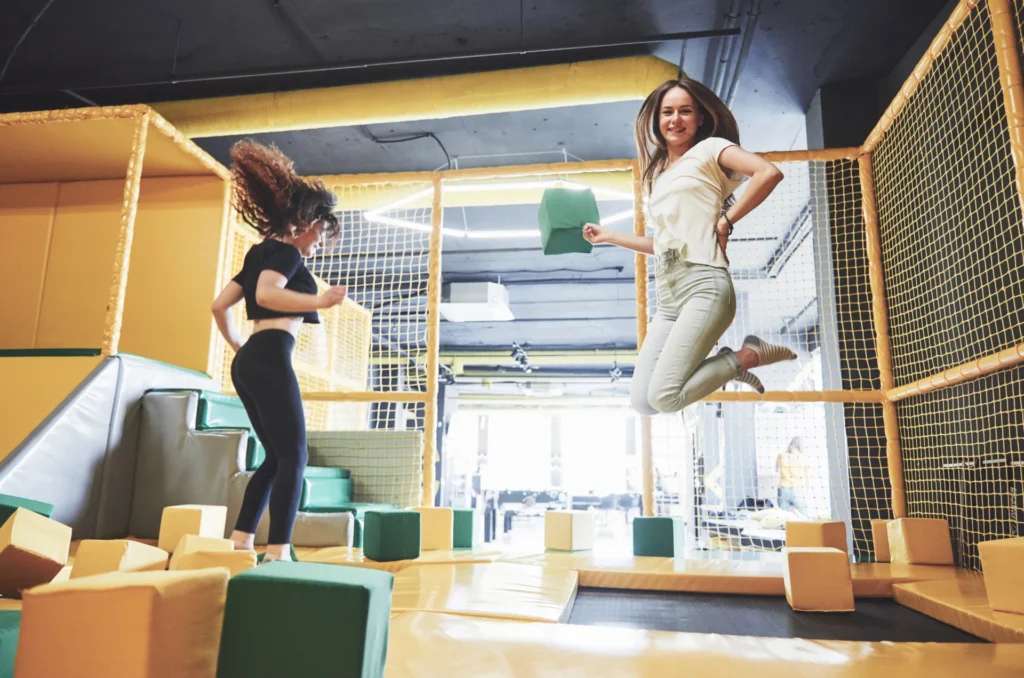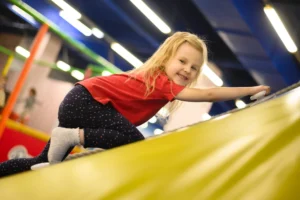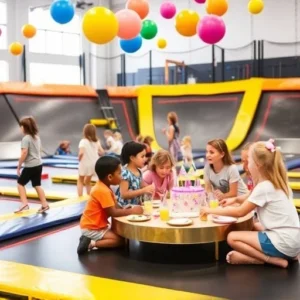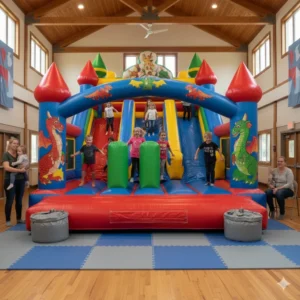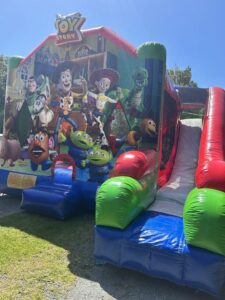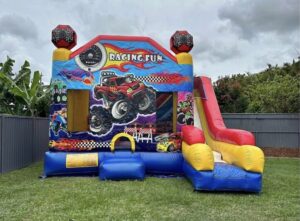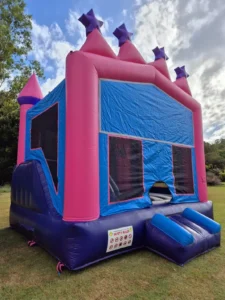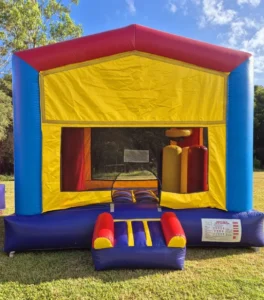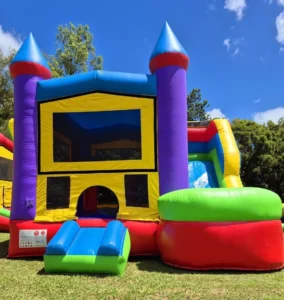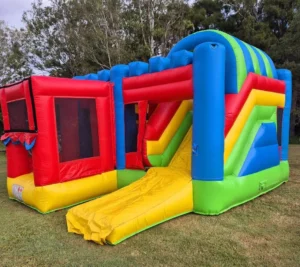An indoor bounce house offers a fun, weatherproof way for kids to burn energy safely under adult supervision. With proper setup, cleaning, and monitoring, it can provide hours of entertainment while keeping injuries and stress to a minimum. Just be sure to measure your space, follow safety guidelines, and keep it clean for long-term enjoyment.
Indoor Bounce House: Fun, Safe, and Weatherproof Play
Indoor bounce houses give you a convenient way to keep kids happily bouncing, regardless of the weather. Better yet, you can enjoy a calmer household as their energy fizzles out in a safe, contained area. In 2010, more than 30 children per day required emergency-room care for inflatable bouncer injuries, according to Nationwide Children’s Hospital. The good news, though, is that careful setup and supervision can dramatically lower these risks. Below, you’ll find practical tips on choosing the right indoor bounce house, making sure it fits your space, and cleaning it so everyone stays healthy. Ready to dive in?
Key idea: With an indoor bounce house, you’ll bring supervised excitement to your kids while minimizing safety concerns when you plan, clean, and monitor it properly.
Why an indoor bounce house is worth it
Indoor bounce houses deliver year-round fun for your children and create a cozy alternative to heading outdoors especially in unfavorable weather. You won’t have to worry about mud or sudden rain, and the kids can bounce away their energy without tromping across your living room furniture. Below are some key advantages to consider.
- Dependable excitement: Bounce houses keep kids active, helping build balance and motor skills. A well-chosen model supports repeated jumps and leaps without wearing out as quickly as typical indoor toys.
- Weatherproof play: Whether it’s cold, rainy, or scorching hot outside, kids can still enjoy playtime. Many indoor models are designed to work in smaller home spaces, and you can set them up in a basement, living room, or large rec area.
- Peace of mind: You can supervise directly. Instead of peeking out a window or worrying about them in the yard, it’s easy to keep an eye on the children bouncing happily not far away.
- Shared fun: Indoor bounce houses fit various ages within recommended limits. Some are small enough for toddlers, while bigger ones can accommodate older siblings, too, as long as weight and height guidelines are respected.
A 2023 study by Hero Kiddo notes that indoor setups can be both fun and secure when done correctly. After all, the last thing you want is to buy or rent a bounce house that feels like a hassle. With the right steps, you’ll see how seamless it can be.
How to pick the right indoor bounce house
Selecting the perfect bounce house means looking at everything from size to safety features. Below are guidelines to help you make a confident choice.
Consider weight and age limits
Indoor bounce houses should specify height and weight capacities. According to Jumper Bee, many smaller inflatables are designed for children 5–7 years old, topping out at 200 lbs in total. However, some toddler-friendly versions have lower limits, while adult-scale inflatables can exceed 200 lbs.
- Ages 3–10 recommended: ActionAir Global advises that bounce houses are generally safest for children in this bracket. Toddlers under 3 are often too small to bounce safely.
- Check brand guidelines: Each manufacturer has its own dimension and weight specs. Exceeding them can cause excessive wear or lead to injuries.
If you’d like to explore the option of renting rather than buying, consider where can i rent a bounce house. Rental companies typically outline maximum capacities and recommended ages for safe usage, so you’ll know precisely what to expect.
Measure your space carefully
A bounce house requires enough width and ceiling clearance to prevent collisions or scraping. Many indoor models have at least 15 feet in vertical height, although Jumper Bee notes bigger designs may need 20 feet or more.
- Aim for room on all sides: Play Smol suggests leaving a 6-foot border to avoid children bouncing directly into walls or furniture.
- Double-check floors: Hard surfaces can cause slipping. Carpet is ideal, as it adds traction and cushions landings. For tile or wood, you may want a padded mat or rug underneath to prevent sliding.
Evaluate materials and safety features
Most indoor bounce houses are made with vinyl-coated nylon or polyester fabrics, higher-grade materials cost more but resist punctures and tears better.
Look for:
- Reinforced seams: If kids land on seams, they can tear if not double-stitched.
- Safety netting: A mesh enclosure helps prevent falls, especially for younger children.
- Secure anchoring points: Make sure there are multiple attachment rings for sandbags or indoor anchor straps.
Balance size and budget
Small bounce houses can start around 6 feet per side. Larger ones can measure 10 feet or more in each direction. If you have a modest living room, consider a mini model that fits under low ceilings. For a bigger basement or playroom, a mid-sized or even large unit might be feasible. While bigger bounce houses can cost more, you won’t have the worry of kids outgrowing the bounce space too quickly.
How to safely set up your indoor bounce house
Once you’ve chosen your bounce house, it’s time to set it up. Proper setup is crucial—nobody wants a half-inflated structure toppling over. Below are the essential steps to ensure a stable, safe environment.
Secure a proper location
Pick a spot near a power source so you can plug in the blower without stretching cords across busy pathways. For safety, Play Smol recommends keeping cords hidden or at least out of traffic areas. Also, keep in mind:
- Ceiling height: Confirm your bounce house can inflate without brushing overhead fans or light fixtures.
- Ventilation: The blower needs good airflow. Don’t block vents or allow fabrics to bunch up around the intake.
Anchor and stabilize
Outdoors, you’d hammer stakes into the ground, but indoors, you can’t. Instead, Play Smol and Hero Kiddo both emphasize using weighted sandbags attached to each anchor point. Check each corner ring, especially if you have a taller bounce house with netted walls, to keep it from shifting.
Inflate it correctly
Many bounce houses rely on continuous air pumps to stay inflated. These pumps operate quietly in the background and ensure a steady air supply, making it safe while kids bounce.
- Connect the blower: Secure the blower’s tube firmly to the bounce house’s air intake.
- Turn on the blower: Watch the structure rise. If you notice it leaning, pause to adjust anchors or the fabric.
- Check for leaks: Listen for hissing or spots where air might escape. Commercial-grade vinyl can show small cracks over time, so patch them quickly.
You might wonder, “Can you use a bounce house indoors?” For a deeper look, check out can you use a bounce house indoors. This can help you confirm that your space truly meets the necessary requirements.
Keeping it clean and hygienic
Maintaining a clean indoor bounce house is essential. Kids can carry in dust, food crumbs, or even the sniffles. A solid cleaning routine helps protect everyone’s health and extends the life of the fabric.
Start with a basic sweep
A quick once-over removes obvious debris:
- Unplug it first: For safety, turn off and disconnect the blower.
- Sweep or vacuum: Remove small rocks, wrappers, or bits of grass. Pay special attention to corners and seams where gunk can hide.
- Spot-check for stains: Whether it’s juice or footprints, a mild soapy solution can work wonders.
According to professionals at Tent and Table, you’ll want to watch for high-traffic areas and entrances, steps, and sidewalls.
Use a mild cleaning solution
A homemade mixture of mild dish soap, vinegar, and water typically cleans vinyl surfaces well. Floatie Kings recommends a simple formula:
- A few drops of dish soap
- Half a spray bottle of water
- Fill the rest with vinegar in roughly equal amounts
Spritz and wipe down. Rinse lightly with a damp cloth if needed. Avoid harsh chemicals or bleach-based products, as they can weaken the vinyl.
Disinfect with care
After removing grime, it’s time to sanitize. Bleach is risky on bounce house fabric, according to Tent and Table, so opt for bleach-free wipes. Floatie Kings and other experts pinpoint heavy-contact areas such as zippers, railings, or netting.
- Focus on surfaces prone to germs: Kids’ hands and faces press into high-traffic spots, so sanitize thoroughly.
- Let it dry completely: If your bounce house is even slightly wet, mold and mildew can form. Using a towel helps mop up moisture, and then leave it inflated (or partly inflated) until it’s fully dry. Good news, most smaller indoor inflatables dry quickly.
Schedule routine cleanings
Many owners think they have to scrub the bounce house daily. Actually, it depends on usage:
- Light daily use: Spot-clean or wipe down spills.
- Heavy use or parties: Do a deeper clean after each event to remove dirt and bacteria.
- Don’t over-clean: Going overboard might wear out seams prematurely. Similarly, be mindful not to store the bounce house damp.
Extend fun with proper supervision and maintenance
Bouncing indoors is a blast, but it also demands constant vigilance from an adult. Maintaining a smooth operation day after day means putting safety first.
Keep an eye on everyone
Having at least one adult in the room is key. Jungle Jumps recommends that parents monitor not only roughhousing but also signs of overcrowding. Kids can eagerly rush in all at once, which raises the chance of collisions.
- Set clear rules: No flipping, no climbing on the walls, and no shoes allowed. This helps protect the fabric and the people inside.
- Separate age groups: If toddlers and older kids bounce together, the size difference can lead to injuries.
- Stay phone-ready: According to Jungle Jumps, have a phone nearby in case of emergencies, but don’t get so distracted that you miss hazards.
Check for signs of wear
Each time you inflate, do a quick assessment:
- Tears or holes: Even small rips can grow under the force of active kids. This frequently happens around seams.
- Weak blowers: If the bounce house sags, the blower might need maintenance.
- Anchor points: Reposition or tighten sandbags if you see shifting.
Addressing these early keeps a minor issue from becoming a big repair job. If you have specialized questions about the broader cost of bigger repairs or expansions, see how much does a bounce house cost for an approximate breakdown.
Rotate activities
Children can get carried away, bouncing non-stop for hours. Consider scheduling breaks to avoid exhaustion or dehydration. Keep water handy, and if you notice them panting too hard, prompt a 15-minute rest. Indoor bounce houses can seem safer than outdoor ones, but kids still need breathers.
Consider professional rentals or hires
For large gatherings, renting can be simpler. Experienced providers know how to install, test, and secure big units. If you need quick solutions, check out bouncy castle rental for a range of options. Rental companies often include disinfecting services too, so you can skip some of the elbow grease post-event.
Enjoy your indoor bounce house with peace of mind
An indoor bounce house brings you the perfect blend of accountability and convenience. You’re in control of the environment, weather isn’t a factor, and supervision is straightforward. From carefully measuring your space and anchoring with sandbags to cleaning with bleach-free disinfectants, each step fosters a space where kids can safely leap, tumble, and laugh. Work these tips into your routine, and an indoor bounce house quickly becomes your go-to source of active fun. Before you know it, the kids will be worn out, and you’ll have your peaceful evening at last.
Ready to Bounce? Book Your Castle Today!
Bring unforgettable joy to your next event, free delivery, easy setup, and zero deposit needed. Whether you’re planning a backyard birthday, school fair, daycare learning activities, or neighborhood party, our safe, colorful jumping castles are waiting.
Choose from popular options like our Rainbow Combo, Monster Truck Combo, or Jungle Obstacle Course for endless fun!
Serving Gold Coast, Logan & Beaudesert, plus Northern NSW with competitive delivery charges. Contact us now or submit your booking in just seconds!
Frequently Asked Questions
1. Can you have a bounce house at a park?
Yes, you can often set up a bounce house at a park, but most cities require a permit. Be sure to check with your local parks department for rules on inflatables, power sources, and safety requirements before booking.
2. Can you use a bounce house indoors?
Absolutely! An indoor bounce house is perfect for year-round fun, especially when weather doesn’t cooperate. Many families choose the best indoor inflatable bounce house models because they’re compact, safe, and easy to set up in large rooms, gyms, or event halls.
3. How much are jumping castles?
The cost depends on size, theme, and whether you’re renting or buying. Rentals typically range from AU$100–AU$500 per day, while indoor bounce houses for sale can start around AU$150 for smaller units and go up to several thousand for larger, commercial-grade models.
4. How to secure a bounce house indoors?
To secure a bounce house indoors, use heavy-duty sandbags or weights (40–60 lbs each) at all anchor points, attaching them securely to the bounce house’s built-in D-rings or straps. Place the unit on non-slip flooring like rubber mats or foam tiles to prevent sliding on smooth surface
5. What is the best indoor inflatable bounce house?
The best indoor inflatable bounce house is one that fits your space, age group, and budget. Look for safety features like mesh siding, durable materials, and easy setup. Many parents also choose a bounce house with slide inside for added entertainment.
Key takeaways
- Measure both the floor area and ceiling height before buying or renting an indoor bounce house.
- Anchor it properly with sandbags or weighted straps to keep it stable.
- Clean and disinfect regularly using mild soapy water, vinegar, and bleach-free disinfecting wipes.
- Always supervise children, separating bigger kids from toddlers for safety.
- Keep a quick maintenance checklist: patch small holes, check blower performance, and review anchor points.
- Give kids rest breaks with water to avoid overexertion.


